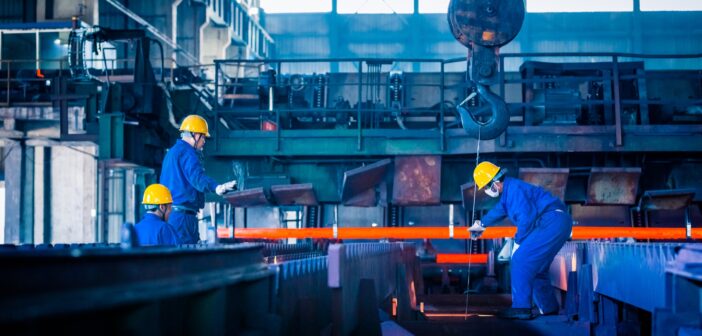A columnist with a leading English daily made a bold statement to criticise the real estate for snail paced growth of manufacturing in India. The argument went on to assert that even if we don’t or can’t export to the world, we still have our own market with reasonable buying power, natural and human resources, technologies and know-how and even money (not to mention Government support); and yet, we are still struggling to match even minnows like Vietnam or Bangladesh in terms of manufacturing sector growth.
Certain arguments are off and on raised against the Indian developers in not being a party to make Indian manufacturing successful. Such questions further raise more critical questions than answer any conclusively.
Is real estate victim or guilty of snail-paced manufacturing in India?
Why has Made in India been just a rhetoric in the Indian real estate?
Is it costing that is a deterrent to use indigenous products or there are larger eco system issues?
In all fairness, the export quantum and dependence on finishing products in real estate has increased post the clarion call for ‘Made in India’ since 2014. If it was China yesterday, today we have other global markets like Vietnam, Thailand, Bangladesh etc to import the sanitary products and electrical items. Cost arbitrage is the reason why indigenous manufacturing is not making any headways. Forget foreign companies setting up manufacturing bases in this part of the world, even the local manufacturing companies find high corporate tax and low labour reforms a big hindrance.
Requesting anonymity, a developer with affordable housing projects points out how there is a cost arbitrage as the profit margins are hardly in the double digit nowadays. And the price difference between the Chinese product and the overall project profitability is the same. Cost arbitrage can’t be ignored and then in India GST on products is a further challenge. According to him, even with a small project he is using export items even though not directly importing products from China. Quality, of course, is slightly superior in importing from the international market.
Abhishek Kapoor, CEO of Puravankara disagrees when he wonders why are we saying that we have not moved ahead on Make in India. According to him, civil structure is almost in-house; finishing tiles etc are being manufactured in India; most of the CP & sanitary factories are here only. He doesn’t think there is any dependency as far as construction is concerned, unless there is a big arbitrage over the product. Recently, when there was arbitrage on steel, the Government took the corrective measures on Custom Duty. Similarly, when there was inflationary pressure due to fuel prices the Government took the corrective measures as commodity prices affect us directly. Same is the case with aluminium and copper, UPVC pipes, any product that you take.
Industry opinion apart, the fact lies that there is a huge opportunity to grow in the Make in India space and it is not just limited to real estate. But then the largest commodity of real estate – cement and steel – is mostly manufactured in India. So, manufacturing and Make in India should be definitely picked up especially in the current geo political scenario.
“If you refer to Current Account Deficit and what the RBI Governor said then it is largely because the country is growing. So, what is happening is that in a growing country you consume more and more resources. So, one of our largest trade deficit is with China only. So, overall it is not that bad; the country is growing and if you are importing to create more and more capital goods then you have to factor in the incremental demand in the country,” says Kapoor.
Naushad Panjwani, Managing Director of Mandarus Partners believes there is the additional angle of forex control. If HNIs have restrictions on their investing abroad and investing in India is the compulsion then amongst other options, land is the most lucrative. “Inflation proof, relatively safe from theft (squatters aside). Circle rates in states like Gujarat, Andhra and few other states intentionally kept low,” says Panjwani.
Indian realty & manufacturing conundrum
Made in India mooted by NAREDCO in the wake of depreciating rupee; didn’t gain ground
Prime Minister called the sector to get into cost & benefit analysis of ‘Make in India’
Sector finds arbitrage over foreign expertise and exports
Developers import nearly USD 10 billion worth building construction products and services every year
The imports not only include products like flooring, cement, home automation but also services like technology, consultancy and architects
Imports in luxury projects account to nearly 30-50 per cent of the total project cost
Real debate is about ‘how to do it’ than ‘why so’
The question is what needs to be done. Or in other words, how could real estate consume more out of ‘Make in India’ manufacturing? The question in itself is flawed, if not in sync with the larger eco system issues. Setting up and making a manufacturing unit in India comes with its own challenges. Cheap labour alone would not give India any edge or cost arbitrage over the export items. ‘Make in India’ has to move beyond the rhetoric of nationalism and reforms have to be introduced at each and every level, ranging from lower corporate tax to labour laws and making the country a happy hunting ground for the manufacturers of the world.
Where reforms are needed to support local manufacturing?
Lower corporate tax
Tax benefits to encourage exports
Labour reforms
Contract enforcement
Commitment against retrospective taxation
In a nutshell, businesses are all about profitability and quality to the clients. And if foreign manufacturers have an edge over these two critical areas, why would anyone, including the builders, opt for a locally manufactured product? So, while the Indian manufacturers are way behind their global peers in exporting the local products, they are equally lagging in selling off to the Indian businesses. Real estate alone should not share the blame for something where malaise is at the core of the larger eco system.
Ravi Sinha
#RaviTrack2Media
Ravi Sinha is a journalist with over two decades of cross-discipline media exposure. He is the CEO of real estate thinktank group Track2Realty. He has been writing extensively on the real estate sector for more than a decade now. Evaluation of real estate brand performance is his core domain expertise and he has immense insight into consumers’ psychograph. He has conceptualised Track2Realty BrandXReport as India’s 1st & only objective & non-paid brand rating journal that is industry-accepted benchmark of brand equity & ranking of the Indian real estate companies.
Track2Realty is an independent media group managed by a consortium of journalists. Starting as the first e-newspaper in the Indian real estate sector in 2011, the group has today evolved as a think-tank on the sector with specialized research reports and rating & ranking. We are editorially independent and free from commercial bias and/or influenced by investors or shareholders. Our editorial team has no clash of interest in practicing high quality journalism that is free, frank & fearless.
Subscribe our YouTube Channel @ https://bit.ly/2tDugGl





